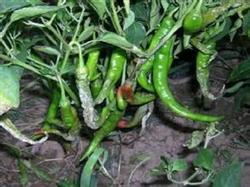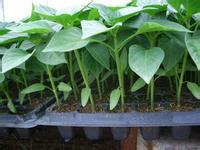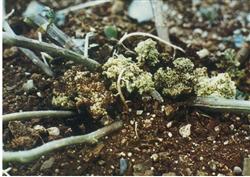Why do a large number of rotten fruits of chili peppers

Recently, a large number of rotten fruits appeared in chili peppers stored by vegetable farmers with "live plant preservation" method, and the main reasons were summarized after in-depth understanding. The temperature in the shed is too high and the temperature in the small arch shed is higher than that in the small arch shed. Because the pepper was covered with a film after being pulled out, the temperature under the film was more than 25 ℃ at noon on a sunny day, and the most suitable temperature for keeping live pepper plants fresh was 5: 8 ℃. The temperature under the film is too high, coupled with poor ventilation, diseases are easy to occur. Therefore, attention should be paid to the temperature change after covering the film, and the film should be opened in time when the temperature under the film exceeds 10 ℃, so as not to cause diseases and rotten fruit caused by excessive temperature. After the pepper is not well ventilated and covered with the film, the humidity under the film will increase, and the lack of timely ventilation and moisture drainage creates a suitable environment for disease occurrence, which eventually leads to the occurrence of disease. Therefore, while doing a good job of heat preservation, the film should be uncovered at noon every day to drain moisture. It can not be watered one week before covering the film, and the fields watered before mulching should pay attention to removing moisture from the film frequently to prevent the occurrence of diseases. Spraying to prevent the disease should be observed frequently after the film is not covered in time, and the disease should be sprayed immediately. Botrytis cinerea and cotton rot are most likely to occur in pepper during this period. Botrytis cinerea can be controlled by pyrimidine and pyrimidine, and cotton rot can be controlled by mancozeb and aldicarb hydrochloride. The liquid is dried and then covered with the film to avoid excessive humidity under the film.
- Prev

Seedling raising technique of Capsicum in protected Field
Seedling raising time and seedling stage. Pepper is cultivated in spring in protected area, usually sowing and raising seedlings from January to February, and the seedling age is 90-110 days. Sow seeds at the right time according to the planting date. Nursery facilities. (1) high-efficiency and energy-saving solar greenhouse; (2) improved solar border with heat preservation; (3) plastic greenhouse, small arch shed covered with plastic film and grass curtain. Kind of.
- Next

How to prevent the production of malformed potatoes
The appearance of "tuber flowering" in potatoes is actually cancer. From the name of potato cancer disease, we can know that this disease is mainly harmful to potatoes, not to other crops, let alone to human health. The so-called cancer is due to the bacteria where the bacteria continue to stimulate host cell division, the formation of large and small.
Related
- Where is it suitable to grow horseradish in China? it is expected to see the middle altitude horseradish in Alishan.
- How to prevent tomato virus disease reasonably? (Control methods included)
- Many people like to plant towel gourd on the balcony. What are the main points of this method and management?
- What crops can chili peppers be mixed with?
- Fertilization techniques and matters needing attention in Tomato
- What are the grafting techniques for peach seedlings in spring?
- Harm and control methods of root swelling disease of Chinese cabbage
- What are the pests of sweet potatoes? How to prevent and cure it?
- Symptoms, causes and Control methods of navel Rot in Tomato
- The cause of "Cucumber rotten bibcock" in Farmers' planting Cucumber and its Control Plan

